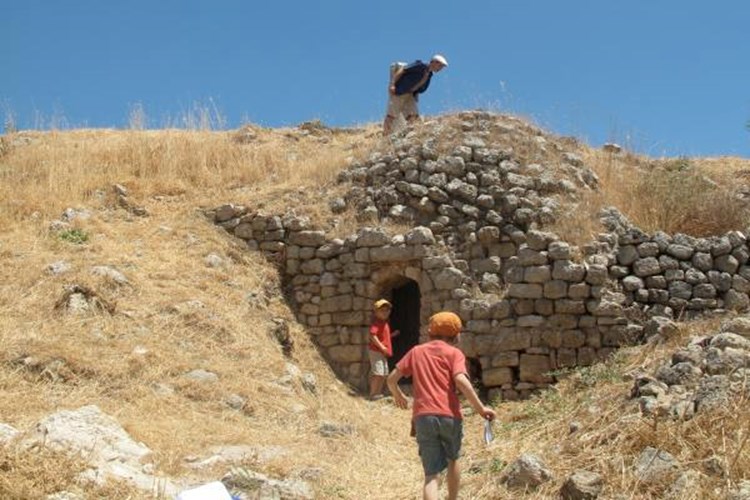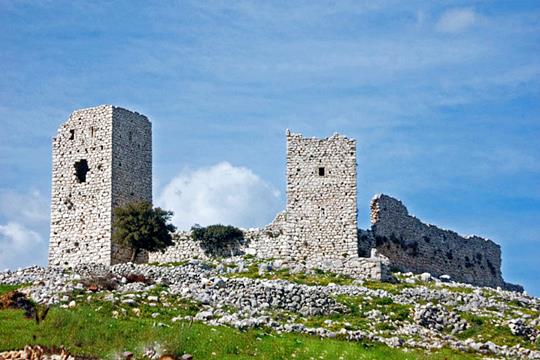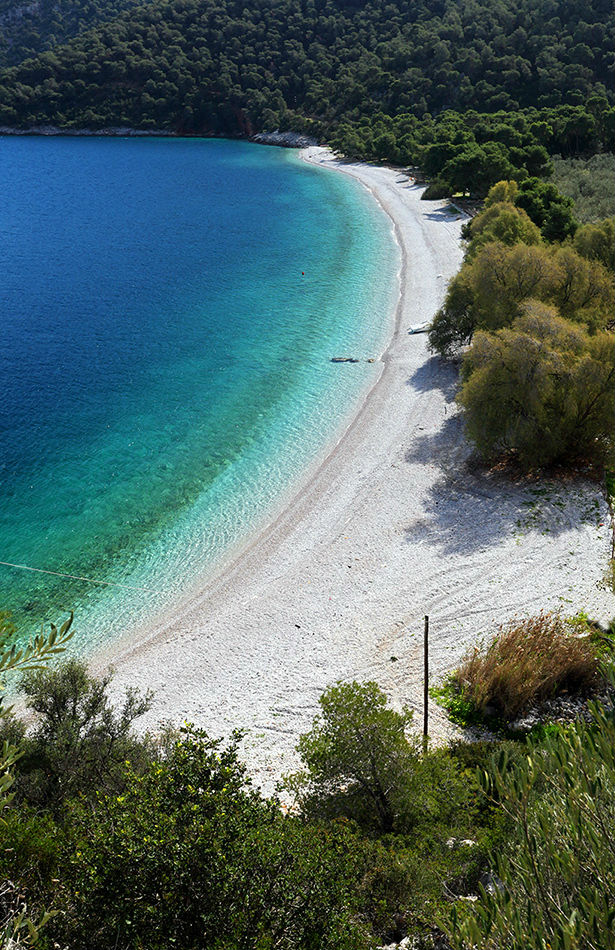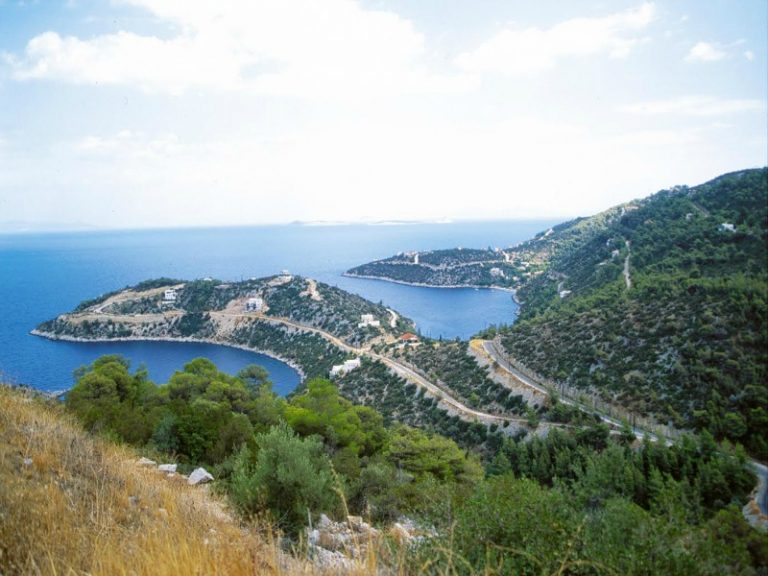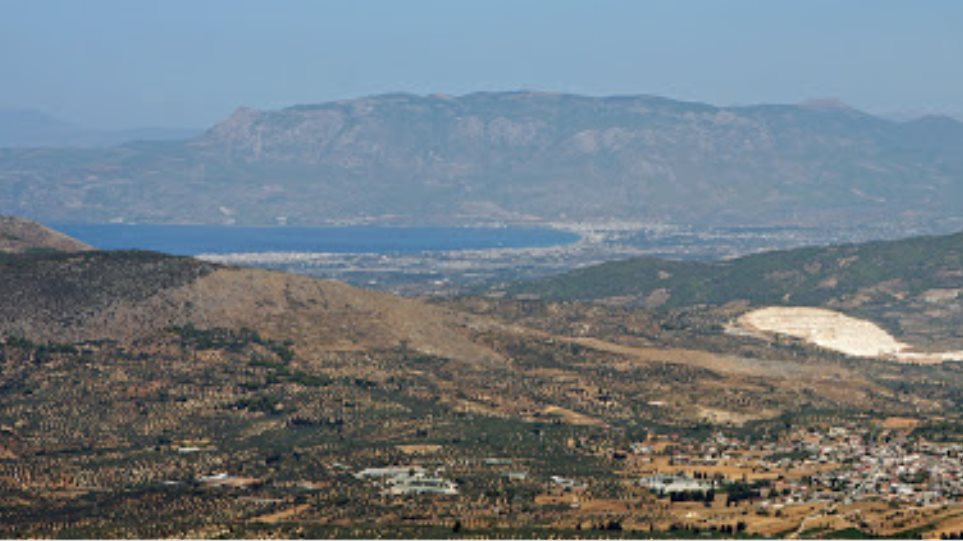
One day with children in Acrokorinthos
Source: athinorama.gr, Published: 10/3/2016
Nearby archeological walk surprise
Surely you have admired it as it stands majestically on the rock starting your excursions around the Peloponnese, but how many have visited it? The castle of Acrokorinthos, together with the archeological site of Ancient Corinth at its foot, is a nice idea for an easy and low budget walk from Athens, while if you read us from Northern Greece and go down for a vacation to Peloponnese it is worth putting in your schedule.
A friend came up with the idea for a day with the children in Acrocorinth, driven by the interest of our four-year-old boys in castles, which is usually satisfied through books about knights and Playmobil. It did not take any preparation (not even to fill the tank with gasoline since it is only about 80 km) but only to set the alarm at 9.30 to save the sun and put the children in the mood by browsing pictures and historical information on the page of the Ministry of Culture. In a short time we were on our way talking about Byzantines, Franks and Ottomans with the plastic pirate sword from Halloween in hand. The route is very easy and there is sufficient signage – as long as you reach the height of Corinth to continue to Tripoli at a point where there is no sign. First you meet Ancient Corinth, an unexpectedly beautiful and well-preserved archeological site that we badly left for after the castle and caught it open for just 10 minutes (closes at 3 on Sundays). It is worth touring around the Doric temple of Apollo that dominates the center and look for traces of the Roman market, baths and galleries and of course admire the findings of the excavations in the museum (mosaics, ceramics, etc.). More about the archeological site here, the ticket costs € 6.
A little higher by car, the castle of Acrokorinthos makes its appearance imposing. The uphill cobbled street that takes you to the successive gates requires non-slip shoes, water and a hat – while as we found out a little later, relaxing under the trees on the plateau with the Byzantine tank overlooking the sea, it would not hurt to we also had supplies for a casual picnic. Admission costs € 2 according to the site, although when we visited it we were not asked for a ticket, while the castle at this time stays open until 7 in the afternoon. A typical example of fortress architecture, with its first fortification dating to the end of the 7th-6th c. e.g. and the surviving walls around the Venetian occupation, the Castle of Acrokorinthos hides inside a large area that you can appetite can give you several hours of exploration looking for ruins of temples, minarets, fountains, etc. The scenery was idyllic both in view and in peace, since apart from the rustling of the air that made us glove in terms of temperature and the voices of the children who were experimenting with the echo, we heard only a few strangers and the music of a group that made a fuss in the ruins!
Going down, he had lunch for good and the ideas for food in Loutraki or Epidavros were replaced with a nice meal on the roof of the family barbecue “Gemelos” which “flies” over the archeological site of Ancient Corinth. Despite the tourist setting (which unfortunately applies to the whole image of the area, with the classic rough constructions, where we saw up to… Mykonian windmill) and the photos of the menus at the entrance, the meat of the hour and the oil were decent, the potatoes handmade, the beers came in an iced glass, the service friendly and fast and the prices around € 10-12 per person.
Of course, if you have picnic supplies with you and more endurance from us, you can easily combine the archeological walk we described with a swim in Loutraki or the surrounding area. We ended up in the old-fashioned playground under the pine trees for relaxation or relaxation on the benches according to the needs of each member of the group and in an orchard and something we were home full of pictures, postcards (and yet there are still!) With archeological findings that impressed to the children (“my jug is older than the mosaic of Isidore, it is 2,500 BC!”) and future plans. So when will we go to Ancient Nemea?


